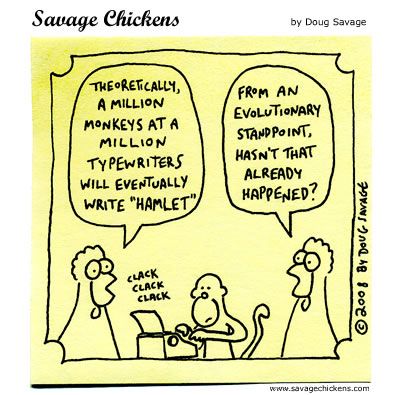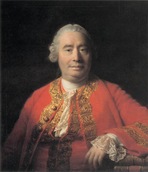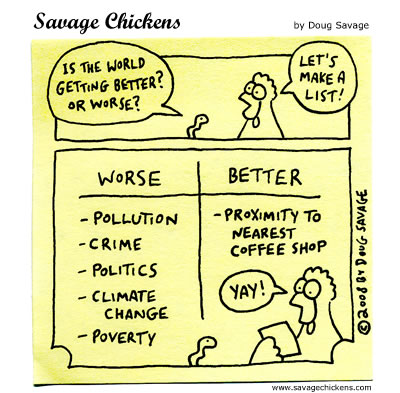Hace tiempo vi un video en YouTube la manera en la que el presidente de Apple, Steve Jobs "inspira" en sus presentaciones. Me gustó tanto que decidí transcribirlo y compartirlo con vosotros. Los cuatro o cinco puntos que se presentan son ciertamente efectivos.
Antes de empezar con la película, quería agradecer a la profesora Beverly Rising, Directora del Departamento de Traducción e Interpretación de la Universidad Pontificia Comillas de Madrid su ayuda en la corrección del texto original, y a mi amiga y compañera Patricia Vázquez por hacer uso de sus "influencias" :-). Muchas gracias a las dos.
Evidentemente, cualquier fallo en la transcripción (tras el video) es responsabilidad enteramente mía. Y ahora, acomódense en sus asientos, y disfruten.
Anyone who's watched a Steve Jobs' keynote will tell you he's one of the most extraordinary speakers in Corporate America.
(Jobs) "Who does the best job of that in the world?"
While most presenters simply convey information, Jobs inspires.
I'm Carmine Gallo and today I'll walk you through several key techniques that Steve Jobs uses to electrify his audience. They're elements you can adopt in your very next presentation.
(Jobs) "Welcome to MacWorld 2008. We've got some... some great stuff for you. There's clearly something in the air today".
With those words Jobs opened MacWorld 2008, setting the theme for his presentation and hinting at the major announcement of the day, the launch of the ultra-thin MacBook Air. Whether it's a new notebook or the iPhone, Jobs unveils a single headline that sets the theme.
(Jobs) "Today Apple is going to reinvent the phone".
Once you identify the theme, make sure's clear and consistent throughout the presentation. Think of a staff meeting, as a presentation, so let's say you're a sales manager, introducing a new software tool to help your team generate, track and share sales leads. You might kick off your meeting this way: "Good moorning! Thanks for coming! I know you’ll be really excited about this. Today we'll make it easier for you to make your quota". That's the headline: "easier to make quota". It's memorable, and it sets the direction for the rest of your meeting. It gives your audience a reason to listen.
(Jobs) "So I've got four things I'd like to talk about with you today".
(Jobs) "So let's get started".
Steve Jobs always provides an outline for his presentation, and then verbally opens and closes each section with a clear transition in between. Here's an example.
(Jobs) "So that's Time Capsule, a perfect companion to Leopard and that's the first thing I wanted to share with you this morning".
The point is: make it easy for your listeners to follow your story. Your outline will serve as guidepost along the way.
You'll also notice that during his presentations Jobs uses words like extraordinary, amazing and cool. He is passionate, enthusiastic, and it shows. "Incredible... unbelievable... amazing... awesome... extraordinary year for Apple".
You know, your audience wants to be wiled, not put to sleep. Too many people fall into this "presentation mode". It's stiff, it's formal, it lacks pazass. We, your listeners, are giving you permission to have fun and to be excited about your company, your product or your service. If you are not passionate about it, we're not going to be.
Remember, Jobs isn't selling hardware. He's selling an experience. If you offer numbers and statistics, make them meaningful.
(Jobs) "We have sold four million iPhones to date. If you divide four millions by two hundred days, that's twenty thousand iPhones every day on average".
Numbers don't mean much unless they're placed in context. Managers connect the dots for your listeners. Recently I worked with a company that launched a 12 Gb memory card. 12 Gb! That number doesn't mean much to most people. So we put it in to context. We said, that's enough memory to listen to your music while travelling to the Moon and back. Now 12 Gb means something to me. Make numbers meaningful.
One of the most effective elements of a Steve Jobs' presentations is that they're easy on the eyes. His presentations are visual and simple. While most speakers fill their slides with mind-numbing data and text and charts, Jobs does just the opposite. He uses very little text and usually one, maybe two, images per slide. You see, you want to paint a picture for your audience without overwhelming them. Inspiring presentations are short on bulletpoints and big on visuals.
If you really want your presentation to pop, treat it like a show, with ebbs and flows, themes and transitions. Jobs includes videoclips, demonstrations, and guess, he also has a knack for dramatic flair. It's very effective. For example, when introducing the MacBook Air, Jobs drew cheers by opening a manilla inter-office envelope, holding the laptop out, for everyone to see.
(Jobs) "This is the new MacBook Air, and you can get a feel for how thin it is".
What is the one, memorable moment of your presentation? Identify it a head of the time and then build up to it.
(Jobs) "With a little help from our friend, everything will work in the world today."
And finally rehearse, rehearse and rehearse some more.
(Jobs) "Let me show you how easy that is now..."
Steve Jobs' makes it look easy because he spends hours rehearsing. He can't pull off intricate presentations, videoclips and demonstrations and outside speakers without practice. The result: A presentation that is perfectly synchronized, and looks, yes, effortless.
Now, the average business person does not have the resources to create a Steve Jobs' extravaganza. But you do have time to rehearse. The greatest presenters do it, and so should you.
Oh, and one more thing. At the end of most presentations, Jobs adds to the drama by saying: "...and one more thing".
(Jobs) "One last thing..."
He then adds a new product, or a feature, sometimes just introduces a band. This not only weightens the excitement, it also leaves your audience's feeling they've been given an added bonus.
The point it that Steve Jobs' approaches each presentation as an event, a production with a strong opening, product demonstrations in the middle, and a strong conclusion. And yes, even an encore, that "one more thing".
I wish you a dazzling presentation.
For more information, go to BNet dot com.
































